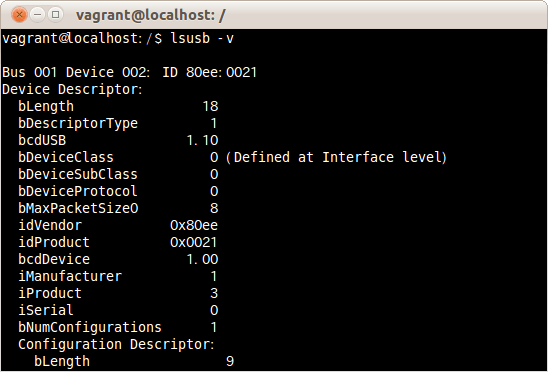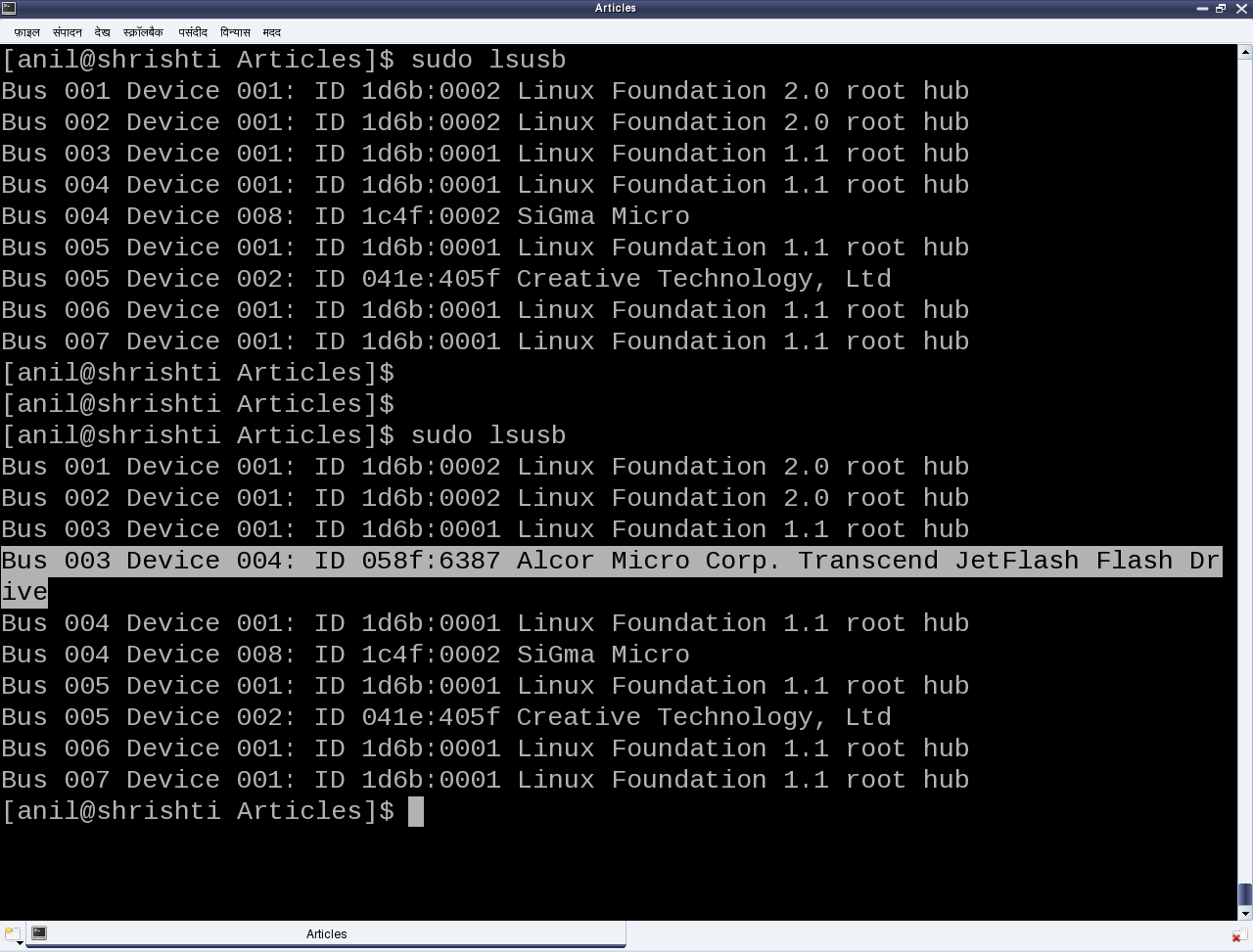

With regards to the display of "Linux Foundation", my guess is that that's where the drivers come from. Probably, it's wired through a USB port inside the computer's case.
#LSUSB LINUX BLUETOOTH#
The Bluetooth device is the chip inside your computer that actually broadcasts Bluetooth radio traffic. For example, there might ony be one USB slot in your motherboard, but there are multiple external ports because there's an internal root hub plugged into the motherboard. Displays your USB devices in reasonable form. Learn more about bidirectional Unicode characters. To review, open the file in an editor that reveals hidden Unicode characters. It's essentially a USB multiplexer.Ī root hub, AFAIK, is a USB hub that's internal. This file contains bidirectional Unicode text that may be interpreted or compiled differently than what appears below. You can try plugging in a device and running lsusb again to see which port is connected to which bus.Ī USB hub is a device that has one cord that plugs into one USB port, but provides multiple USB ports for you to plug devices into. Some or all of these might have external ports for plugging in various USB external devices. And you have two high-speed USB buses and six low-speed ones. So this output indicates that you have eight (!) built-in USB buses, with three devices connected to them. On the same bus is the AuthenTec device, which is a fingerprint scanner, again low-speed. That makes sense, since Bluetooth is relatively low speed. Similarly, the Bluetooth device is internal (as strugee noted) and again is connected to a USB bus, in this case Bus 004, which is a USB 1.1 (low-speed) bus. (Again, it's labeled as Device 002 because the bus itself is Device 001.) The SanDisk device might present itself to the outside world as a PCMCIA slot (I'm guessing) but internally it's connected to USB Bus 001. I believe that the whole "Linux Foundation" thing came about because the physical device has PCI, not USB, identifiers. A "USB root hub" represents the physical PCI device. They're made by Intel, not the Linux Foundation. For instance, on my machine I have two USB buses, and two USB Host Controllers visible by the lspci command. (A subtle point - there actually is a " USB Host Controller" that is a physical device - but it's NOT itself a USB device! It's normally a PCI device. The "manufacturer" is always 1d6b, the "Linux Foundation," but so far as I can tell, that's merely to create a "root" for the tree's "branches" (as you'll see from lsusb -t, as suggested by Wagner). It always has a device number of 1 on whatever bus it sits on.

Often Linux can show you more information, but in this case it’s just the name of the manufacturer.The "root hub" is a phony device and represents the bus itself. Intel Corp.: This is the description of the device.If you buy a USB product multiple times, all of them will have the same ID. This ID will always stay the same for any given device. O lsusb mostra os dispositivos conectados que forem USB em seu sistema linux. These IDs are assigned by the USB Implementer’s forum. Nesta pequena dica linux irei mostra uma introduo ao comando lsusb do linux. The second part ( 0a2b) is the Product ID (PID). The first part ( 8087) is the Vendor ID (VID). ID 8087:0a2b: This is the ID assigned to that device.Device 003: In the aforementioned bus, the device has been assigned the ID 003.




 0 kommentar(er)
0 kommentar(er)
